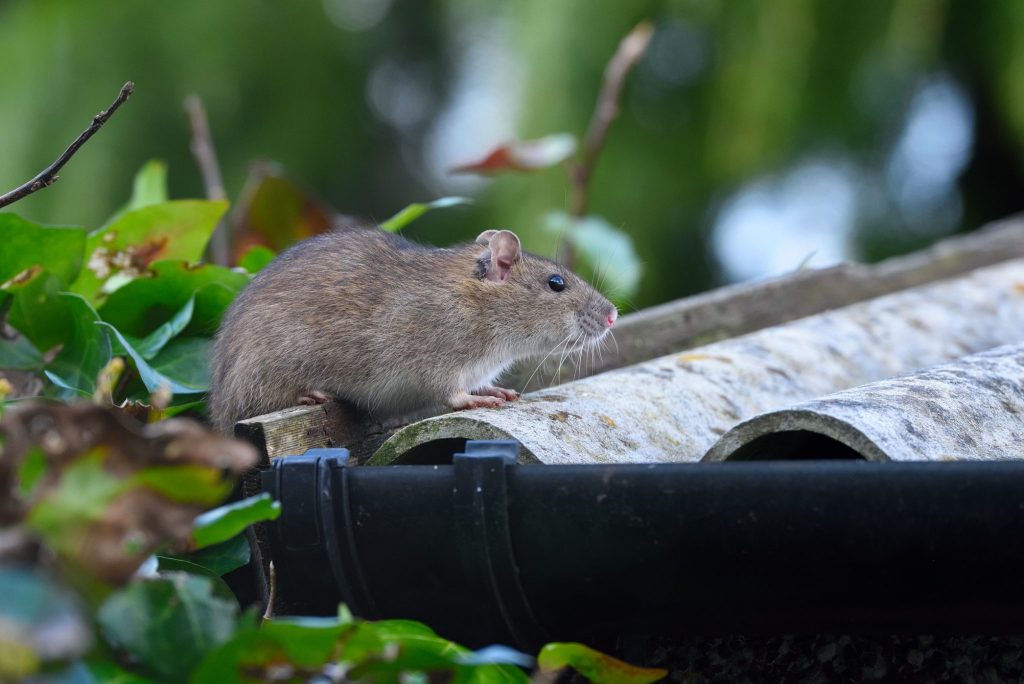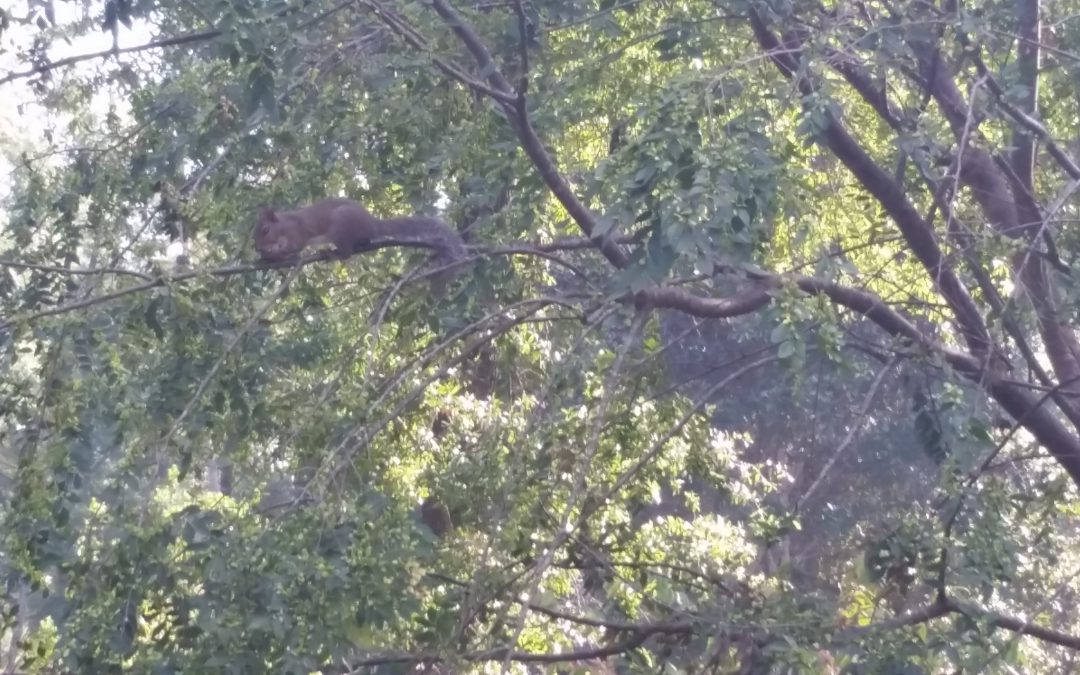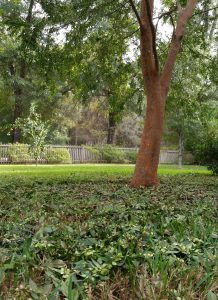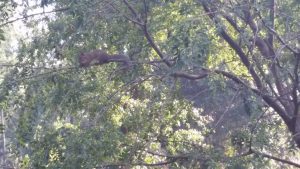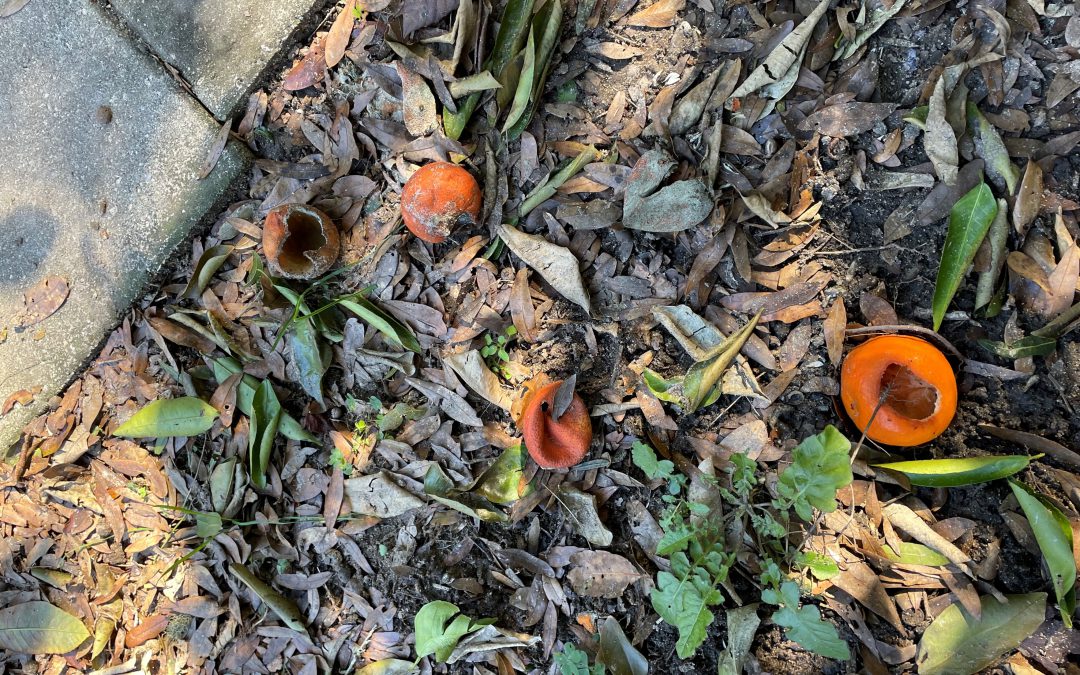
Fruit Thieves: Roof Rats
We often think of plant pests to be only insects. However, plant pests can also be fungal and bacterial diseases, weeds, and even rodents. That’s right, rodents, like squirrels, mice, and rats! One particularly annoying rodent pest of the garden is the roof rat (Rattus rattus, a.k.a. citrus rat, fruit rat, black rat, or gray rat). Roof rats are native to southern Asia. This is the same species that was responsible for carrying the bubonic plague around the world. Roof rats are the most detrimental rodent pest to fruit crops in the state of Florida. In addition to fruit crops, they feed on stored animal and human food. Roof rats live in attics, soffits, walls, and outbuildings. They also chew through wires, pipes, and walls. Roof rats damage some fruit crops (like citrus and melons) by first creating a half dollar sized hole, then they hollow out the fruit. In crops without a rind or peel, like peaches and tomatoes, they just eat large chunks.
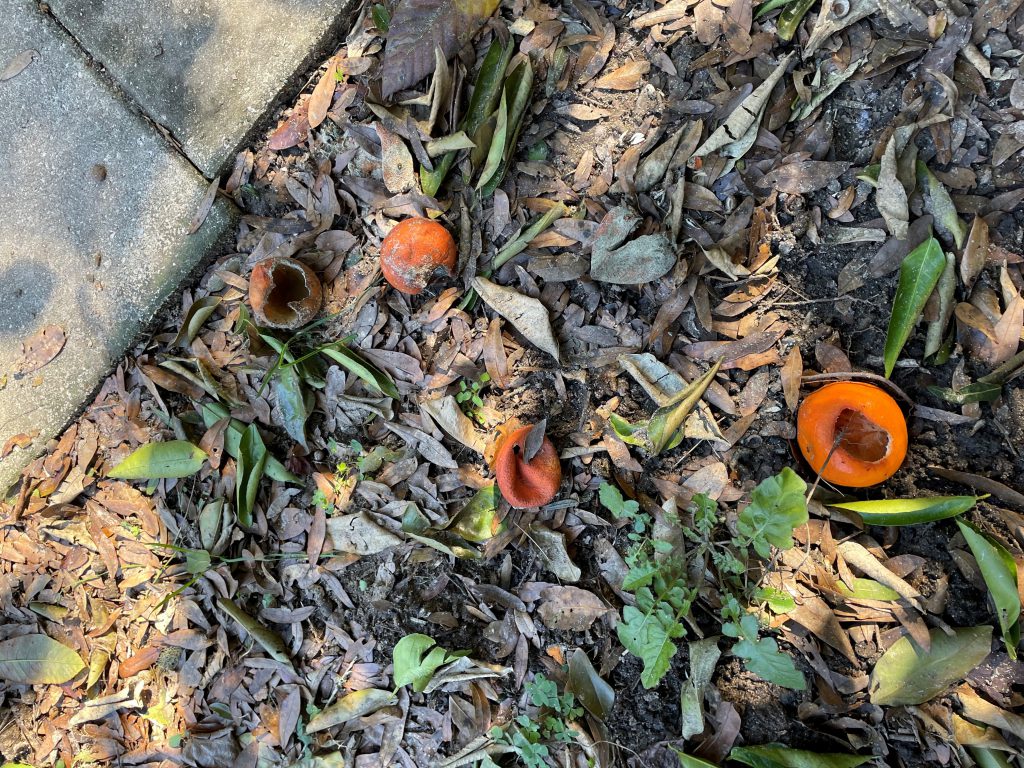
Roof rat damage to tangerines. Photo Credit: Matt Lollar, University of Florida/IFAS Extension – Santa Rosa County
Adult roof rats are 12-14 inches long with tails longer than their body length. In Florida they have been identified in three color phases: black back with gray belly; gray back with light gray belly; and brownish gray back with a white or cream colored belly. Other than fruit damage, evidence of infestation includes 1/4-1/2 inch long droppings and rub marks left along travel trails. Roof rats will travel up to 150 yards from their den for food and water. They breed year-round and have litters of 5-8 pups with a gestation period of only 21 to 23 days.
A well-thought-out integrated pest management strategy is needed to control and potentially prevent roof rats on your property. Integrated pest management is a strategy consisting of multiple tactics to control a pest. These tactics include scouting (looking for evidence of the pest population); prevention; trapping and exclusion; biological control such as predators; and rodenticides and repellants.
- Prevention – Roof rats are good climbers and swimmers. It is important that fruit trees are planted away from the house, fences, and outbuildings. Make sure to prune fruit trees away from these structures if they can’t be removed or transplanted to another location. Also prune branches from touching the ground to help prevent rats from using trees for cover. Sheet metal (18-24 inches wide) can be loosely wrapped around the tree trunk to keep rats out of the tree.
- Trapping – Rat traps can be placed in several strategic locations. Traps (triggers facing down) can be attached to the trunks of trees. Traps can also be attached to the stringer boards on a fence. Make sure that traps are only set from dusk to dawn to avoid killing non-target species like birds and squirrels. Leave traps in place for at least a week before moving them because roof rats are cautious of new objects.
- Rodenticides & Repellants – Poisons should only be used after all other control methods are exhausted. Most products are very toxic to humans, pets, and wildlife. If used outdoors, poison baits must be placed in tamper-resistant bait stations.
- Biological Control – Rat snakes and king snakes are good natural predators for roof rats. If you have more open spaces you may consider building a barn owl house. Barn owls and hawks are also natural predators. You may also consider getting a farm cat to help control the population. Cats will kill juvenile rats, but have trouble catching adult rats.
Hopefully you will never have to encounter roof rats or other rodents invading your yard and house. However, if they do come around more information is available in the publication “Pests in and Around the Southern Home“.

